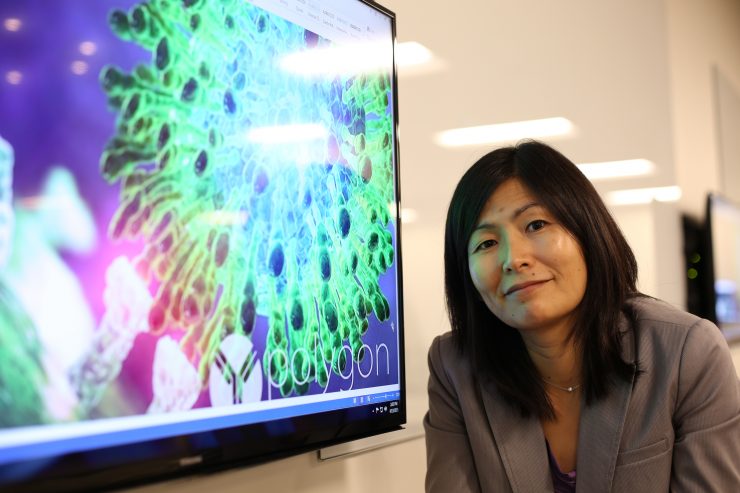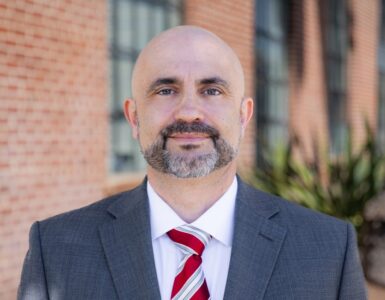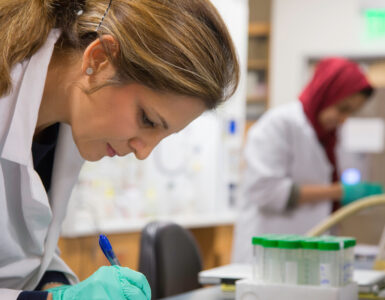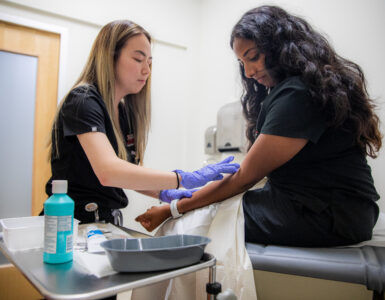As the world scrambled to battle the coronavirus pandemic this spring, we all watched the numbers. How many new cases? What were the stats on the curve? How many months to a vaccine against the virus that causes the disease COVID-19?
Meanwhile, Jerika Lam, associate professor at Chapman University’s School of Pharmacy, watched another mounting figure. The number of new clinical trials testing pharmaceutical therapies that might offer effective COVID-19 treatment. By April, that was about 60 a week.
Lam knows because she followed each one, reading the reports and early findings, distilling from them the news of hopeful progress, as well as the ineffective dead ends. Her goal is to put that information in the hands of doctors treating COVID-19 patients. As part of a task force assembled by the Patient Safety Foundation, Lam conducts this research review and compiles a weekly report for busy medical teams eager to learn the latest and best information and potentially apply it in practice.
Reports are free to clinicians
The non-profit foundation, launched by the medical technology company Masimo and its CEO Joe Kiani, makes the reports available free to clinicians fighting the pandemic around the globe, along with a series of webinars it posts on its website.
“People are desperate for therapeutics. And I know everyone’s trying everything, including remedies in their mother’s kitchen cabinet,” says Lam, PharmD.
Of course, Lam advises a more scientific and evidence-based approach. But until the virus is better understood, it’s fair to say that researchers are combing through pharmacopeia’s existing medicine chest, so to speak, hoping to find drugs with crossover benefits in the battle against COVID-19. From Lam’s perspective, a likely category will be antivirals.
“What makes sense to me is since this is a virus, we should use therapies that have antiviral qualities. We know how they work,” says Lam, whose research is focused on the efficacies of drugs used to combat HIV and hepatitis C.
A difficult balancing act
But she also warns that it’s not a simple hop, skip and jump. Every drug therapy has side effects, risks and various levels of effectiveness. In many patient populations, those factors post additional hazards, she says. What’s more, some COVID-19 patients also receive medications to lessen the body’s inflammation response, along with antibiotics to treat secondary bacterial infections. It creates a challenging balancing act.
Lam welcomes the job of sorting through that profusion of information.
“I have a sense of purpose being on this task force,” she says.
Lam’s role with the Patient Safety Foundation is an outgrowth of a larger initiative at Chapman University School of Pharmacy. She is one of several faculty there who worked with the foundation to create a core curriculum to improve patient safety education for students in medical, pharmacy and nursing schools and made available free to those institutions.
In addition, the school will launch two related graduate programs this fall – the Master of Science in Patient Safety and the Master of Science in Regulatory Affairs. The programs aim to equip graduates with hybrid skills that prepare them to work in the research industry as scientists as well as strategic leaders.
Future health care needs such professionals, Lam says.
“We need good strategy, good structures, good leadership and the capacity to combat pandemics when they strike,” she says. “We have to prepare. That’s the only way we can tackle future pandemics.”




